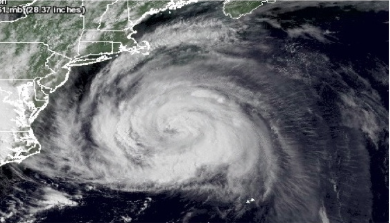SALT SPRAY ZONE PLANTS You are welcome to download your own copy of this new publication, by clicking on the link below. When the right forward quadrant of Hurricane Irene hit Cape Cod, we experienced an empirical vent of full wind but with no rain. This was an opportunity to assess salt impacts and survivability of native vegetation. We did a survey of direct and indirect impact sites and resurveyed the following spring. 6 pages of color photographs.
Synopsis:
Coastal salt spray events are unwelcome but may play critical roles in selecting sustainable coastal vegetation. Changing storm tracks will create new liabilities for overly diversified coastal habitats. This publication documents Hurricane salt spray impacts on native coastal vegetation.
Medium Exposure site was located 800 + ft inland from the surf line. Onshore salt spray had to cross small buildings, a 2 lane road, low vegetationand a 4 lane road, with little change in elevation. The area consisted of 6-12 ft, established native and other vegetation.
High Exposure was located 10-60 ft from the surf line. The area consisted of recently planted and established, 1 ft -5 ft high native vegetation. Onshore salt spray, had to cross a 7 foot high coastal bank to impact the vegetation on a level grade.
Hurricane Irene, Satellite Image
The Hurricane: In late August, 2011, Hurricane Irene, with a 500 mile diameter Tropical Storm Force wind field, passed west of Cape Cod. The low precipitation, right hand semi-circle impacted Cape Cod from the Southwest. 50+ mph winds bridged tidal cycles for 15 hours. Prolonged wind, coated leaves and stems of exposed coastal vegetation with salt.
Unmitigated by precipitation, this became an empirical, “worst case scenario” for exposed vegetation, and an opportunity to study salt stress.
Observations: Non-coastal natives were quickly dispatched by even the medium, albeit lengthy, exposure to salt spray. Established, native coastal plants, with the exception of Beach Plum, regained seasonal performance. Directly following the storm event, recent plantings of Rugosa Roses and Seaside Goldenrod presented the appearance of100% salt kill. 2 weeks later, they were sprouting new leaves. 3 weeks after exposure, previously established Seaside Goldenrod showed flower heads (See cover photo on page 1), followed by blooms on a few, previously established Rugosas. Existing and planted American Beach Grass had minimal impacts.


